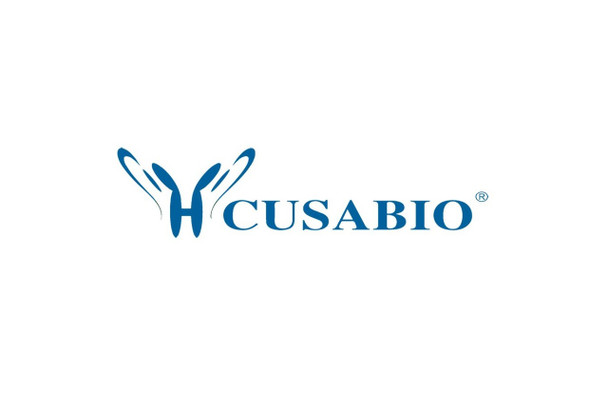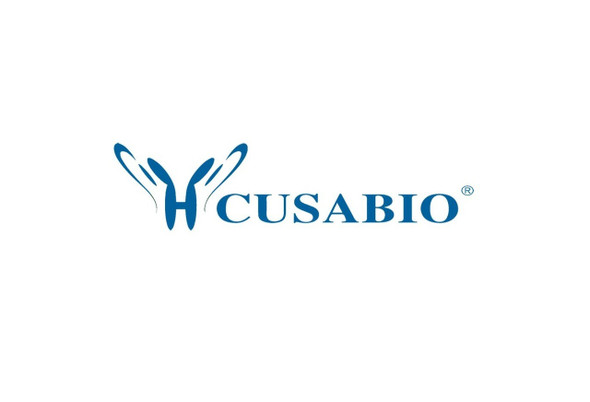Cusabio Mouse Recombinants
Recombinant Mouse Endoribonuclease ZC3H12A (Zc3h12a) | CSB-EP704737MO
- SKU:
- CSB-EP704737MO
- Availability:
- 13 - 23 Working Days
Description
Recombinant Mouse Endoribonuclease ZC3H12A (Zc3h12a) | CSB-EP704737MO | Cusabio
Alternative Name(s): Monocyte chemotactic protein-induced protein 1 (MCP-induced protein 1) (MCPIP-1) (Regnase-1) (Reg1) (Zinc finger CCCH domain-containing protein 12A) (Mcpip) (Mcpip1)
Gene Names: Zc3h12a
Research Areas: Cancer
Organism: Mus musculus (Mouse)
AA Sequence: MSDPCGTKPVQESNPTMSLWSLEDRHSSQGRPQPDQDPVAKEAPTSELQMKVDFFRKLGYSSSEIHSVLQKLGVQADTNTVLGELVKHGSATERECQALTAPSPQPPLVPRGGSTPKPSTLEPSLPEEDREGSDLRPVVIDGSNVAMSHGNKEVFSCRGILLAVNWFLERGHTDITVFVPSWRKEQPRPDVPITDQHILRELEKKKILVFTPSRRVGGKRVVCYDDRFIVKLAFESDGVVVSNDTYRDLQGERQEWKRFIEERLLMYSFVNDKFMPPDDPLGRHGPSLDNFLRKKPLPSEHRKQPCPYGKKCTYGIKCRFFHPERPSRPQRSVADELRANALLSPPRTPVKDKSSQRPSPASQSSSVSLEAEPGSLDGKKLGARSSPGPHREGSPQTCAPAGRSLPVSGGSFGPTEWLAHTQDSLPYTSQECLDSGIGSLESQMSELWGVRGGSPGESGPTRGPYAGYHSYGSKVPAAPSFSPFRPAMGAGHFSVPTDYVPPPPTYPSREYWSEPYPLPPPTPVLQEPQRPSPGAGGGPWGRVGDLAKERAGVYTKLCGVFPPHLVEAVMRRFPQLLDPQQLAAEILSYKSQHLSE
Source: E.coli
Tag Info: N-terminal 10xHis-tagged and C-terminal Myc-tagged
Expression Region: 1-596aa
Sequence Info: Full Length
MW: 73.0 kDa
Purity: Greater than 85% as determined by SDS-PAGE.
Relevance: Endoribonuclease involved in various biological functions such as cellular inflammatory response and immune homeostasis, glial differentiation of neuroprogenitor cells, cell death of cardiomyocytes, adipogenesis and angiogenesis. Functions as an endoribonuclease involved in mRNA decay. Modulates the inflammatory response by promoting the degradation of a set of translationally active cytokine-induced inflammation-related mRNAs, such as IL6 and IL12B, during the early phase of inflammation. Prevents aberrant T-cell-mediated immune reaction by degradation of multiple mRNAs controlling T-cell activation, such as those encoding cytokines, cell surface receptors and transcription factor. Inhibits cooperatively with ZC3H12A the differentiation of helper T cells Th17 in lungs. They repress target mRNA encoding the Th17 cell-promoting factors IL6, ICOS, REL, IRF4, NFKBID and NFKBIZ. The cooperation requires RNA-binding by RC3H1 and the nuclease activity of ZC3H12A. Self regulates by destabilizing its own mRNA. Cleaves mRNA harboring a stem-loop, often located in their 3'-UTRs, during the early phase of inflammation in a helicase UPF1-dependent manner. Plays a role in the inhibition of microRNAs biogenesis. Cleaves the terminal loop of a set of precursor miRNAs important for the regulation of the inflammatory response leading to their degradation, and thus preventing the biosynthesis of mature miRNAs. Plays also a role in promoting angiogenesis in response to inflammatory cytokines by inhibiting the production of antiangiogenic microRNAs via its anti-dicer RNase activity. Affects the overall ubiquitination of cellular proteins. Positively regulates deubiquitinase activity promoting the cleavage at 'Lys-48'- and 'Lys-63'-linked polyubiquitin chains on TNF receptor-associated factors, preventing JNK and NF-kappa-B signaling pathway activation, and hence negatively regulating macrophage-mediated inflammatory response and immune homeostasis. Induces also deubiquitination of the transcription factor HIF1A, probably leading to its stabilization and nuclear import, thereby positively regulating the expression of proangiogenic HIF1A-targeted genes. Involved in a TANK-dependent negative feedback response to attenuate NF-kappaB activation through the deubiquitination of IKBKG or TRAF6 in response to interleukin-1-beta stimulation or upon DNA damage. Prevents stress granules formation and promotes macrophage apoptosis under stress conditions, including arsenite-induced oxidative stress, heat shock, and energy deprivation. Plays a role in the regulation of macrophage polarization; promotes IL4-induced polarization of macrophages M1 into anti-inflammatory M2 state. May also act as a transcription factor that regulates the expression of multiple genes involved in inflammatory response, angiogenesis, adipogenesis and apoptosis. Functions as a positive regulator of glial differentiation of neuroprogenitor cells through an amyloid precursor protein -dependent signaling pathway. Attenuates septic myocardial contractile dysfunction in response to lipopolysaccharide by reducing I-kappa-B-kinase-mediated NF-kappa-B activation, and hence myocardial proinflammatory cytokine production.
Reference: "Monocyte chemotactic protein-induced protein 1 (MCPIP1) suppresses stress granule formation and determines apoptosis under stress." Qi D., Huang S., Miao R., She Z.G., Quinn T., Chang Y., Liu J., Fan D., Chen Y.E., Fu M. J. Biol. Chem. 286:41692-41700(2011)
Storage: The shelf life is related to many factors, storage state, buffer ingredients, storage temperature and the stability of the protein itself. Generally, the shelf life of liquid form is 6 months at -20?/-80?. The shelf life of lyophilized form is 12 months at -20?/-80?.
Notes: Repeated freezing and thawing is not recommended. Store working aliquots at 4? for up to one week.
Function:
Involvement in disease:
Subcellular Location:
Protein Families:
Tissue Specificity:
Paythway:
Form: Liquid or Lyophilized powder
Buffer: If the delivery form is liquid, the default storage buffer is Tris/PBS-based buffer, 5%-50% glycerol. If the delivery form is lyophilized powder, the buffer before lyophilization is Tris/PBS-based buffer, 6% Trehalose, pH 8.0.
Reconstitution: We recommend that this vial be briefly centrifuged prior to opening to bring the contents to the bottom. Please reconstitute protein in deionized sterile water to a concentration of 0.1-1.0 mg/mL.We recommend to add 5-50% of glycerol (final concentration) and aliquot for long-term storage at -20?/-80?. Our default final concentration of glycerol is 50%. Customers could use it as reference.
Uniprot ID: Q5D1E7
HGNC Database Link: N/A
UniGene Database Link: N/A
KEGG Database Link: N/A
STRING Database Link: N/A
OMIM Database Link: N/A









